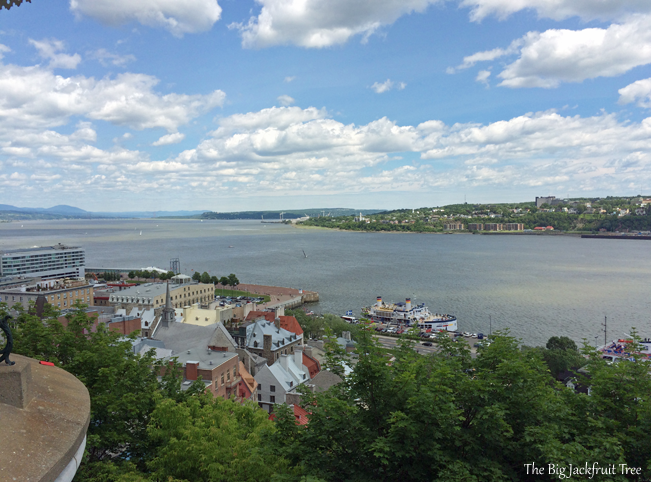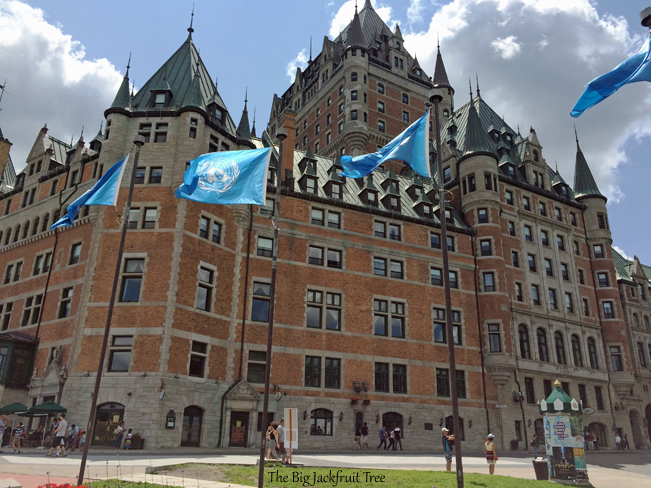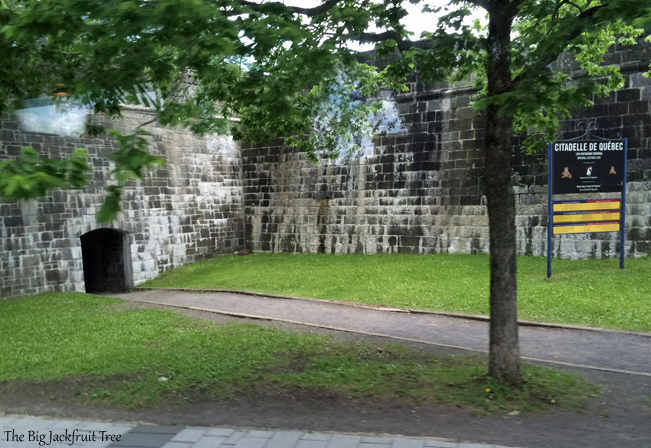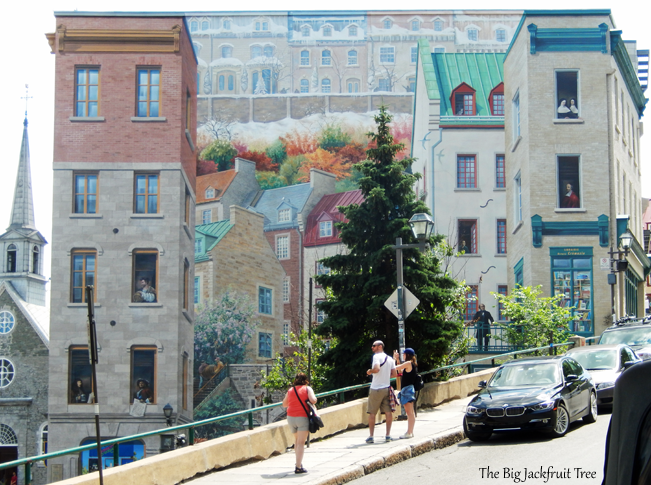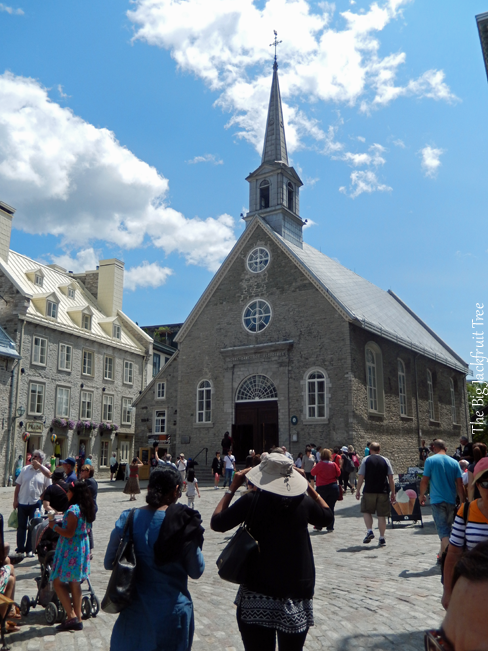Quebec Oh Quebec!
Author: Ria | Category: Canada, UNESCO World Heritage Site | Tags: Cap Diamant, Cape Diamond, Chateau Frontenac, Fresque des Quebecois, Old Quebec, Place Royale, Quebec, Quebec City, Rue de Petit Champlain, Samuel de Champlain
Quebec, oh Quebec… why did you leave me? After enchanting me with your delightful little cobblestone streets and quaint town squares and charming architecture and pretty little art shops and beautiful parks and delicious food and your charming French-accented English speech and your many many alluring ways, why did you leave me? Yes, yes, you are right, I’m sorry… Yes, it was I who left you! Buckling under the pressure of life’s million little cares, I had to leave you. But this I promise you… I’ll be back. And we will spend many an enjoyable day together… Promise!
Obviously, I enjoyed the trip to the province of Quebec and especially to its capital Quebec City very much. Surrounded on three sides by the waters of St. Lawrence and St. Charles rivers, Ville de Quebec (Quebec City’s French name) is one of the oldest cities of North America.
Quebec City was founded by Samuel de Champlain in 1608, a French explorer and diplomat. It was the first permanent European settlement in the territory of present-day Canada and the capital of New France, the French colony till 1867.
Old Quebec, a historical neighbourhood of Quebec city, is utterly charming. Its cobblestone streets and quaint shops bring forth images of Europe. No wonder Quebec City is sometimes called ‘Petit Paris’! Old Quebec is a UNESCO’s World Heritage Site.
Upper Town in Old Quebec is located on top of Cap Diamant (Cape Diamond) promontory, provides a beautiful view of the St Lawrence river below. A statue of Samuel de Champlain stands prominent on the square.
The Chateau Frontenac, said to be the most photographed hotel in the world, is an imposing structure and dominates the city’s skyline spectacularly.
Built in 1893, the hotel was the site of the Quebec Conference in 1943, where Winston Churchill and Franklin D Roosevelt met to discuss world war 2 strategy. If you would like to check out the rates for a weekend’s stay, here is the link.
Also, located in the Upper Town is La Citadelle, a functioning fortress. Quebec City is the only fortified city north of Mexico. The ramparts of the city stand strong even today, along with the citadel. Work on the citadel was started in 1820, and guess why? To prevent attacks from the United States! Seriously… in 1812, the US had tried to conquer Quebec City and other parts of Canada which were British holdings while fighting a war with Britain over the blockading of the oceans by Britain. Needless to say, the attempt failed and today the citadel is a National Historic Site of Canada.
Century-old great looking houses of the for-generations rich and famous populate the residential areas of Upper Town. Historical sites and beautiful parks add to the uniqueness of the area.
Lower Town, located at the foot of the Cap Diamant, is the commercial center of Old Quebec. This is the location where Samuel de Champlain built his original settlement, remains of which can still be discerned and are marked. I can doubtlessly say Lower Town is my most favourite spot in the entire city.
Place Royale, a public square was named so in 1686 after a bust of King Louis XIV of France was placed in the square. Once, this was the commercial center around where the merchants and businessmen lived, who during the French-British wars moved to the Upper Town for its safer environments.
At one end of the square stands the Fresque des Quebecois (fresco for the people of Quebec), a huge mural on the face of a building. Completed in 1999, this mural encompasses the local history of 400 hundred years in a canvass of 420 sq meters.
In addition to the daily life activities and the four seasons, 16 of the prominent historical figures are also represented. The details of the creation of this mural are very interesting.
On the opposite side of the square is the Eglise Notre Dame des Victoires (Our Lady of Victory church). Built on the site of the Champlain’s first residence, it is one of the oldest stone churches.
And then there is the Rue de Petit Champlain, the most picturesque street ever.
In addition to wonderful arts and crafts shops and restaurants, the narrow stone-paved street has a little area with benches and swings and live music where you can sip your wine and chill out.
The whole Quartier Petit Champlain area is indeed beautiful.
By the way, Rue de Petit Champlain is the oldest street in North America! Yep, I know, I have been repeating the word ‘oldest’ a lot! 🙂
To be continued…
~Ria
23 Jul 2015
